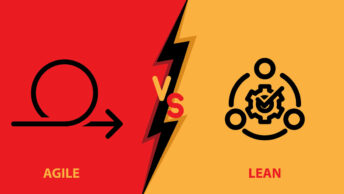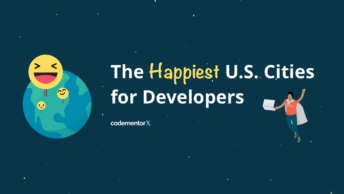In the dynamic world of tech, your choice of backend language isn’t just about writing code. It’s about setting the pace for your project, boosting team productivity, and, ultimately, shaping the success story of your venture. This isn’t news to you. You might find something intriguing: the backend language landscape has seen some fascinating shifts in 2023. Whether you’re scouting for a new language to adopt or just here to see if your favorite cut, we’ve got you covered. Let’s dive in.
With your first glance, you’ll notice familiar giants still holding their ground. Python, the resilient powerhouse, continues to flex its muscles. Then there’s Go, merging simplicity and speed in a way we’ve never seen before. But they’re not alone in this race. Some languages are catching up this year, promising innovation, speed, and reliability. Each one has its story, strengths, and a lesson or two for all of us.
1. Python: The Resilient Powerhouse
Remember when Python was just another scripting language? Fast forward to now, and it’s possible to envision the tech ecosystem with it. Adaptable, easy to learn, and remarkably versatile, Python remains a top choice for startups and tech giants.
Consider PhoenixTech, a startup that recently made headlines. Launching a machine learning-driven marketing tool, they relied on Python for its robust libraries and flexibility.
Within a year, PhoenixTech reported a 200% growth in client acquisitions. Their secret? A blend of Python’s data capabilities and rapid development speed.
Python isn’t just surviving; it’s thriving.
As of 2023, Python boasts a 20% increase in adoption, making it one of the fastest-growing languages this year. It is widely used in AI technologies, such as text-to-speech tools.
Whether you’re a Python enthusiast or just a curious developer, one thing’s clear: Python’s not going anywhere. It’s evolving, adapting, and, more importantly, empowering developers to create previously impossible solutions.
2. Go (or Golang): Simplicity Meets Speed
We’re sure you’ve heard of Go, affectionately termed Golang by its growing community. A language developed by tech giant Google, Go presents an amalgamation of simplicity with the sheer power of performance.
Why’s everyone talking about Go? Because it’s engineered to be concurrent, compiled, and easy to use. Remember when we used to fret about balancing efficiency with ease of development? With Go, that’s yesterday’s news.
Code snippet
Enter GreenTech, a forward-thinking company that builds sustainable tech solutions. They shifted their entire backend to Go last year. The result? A 50% decrease in server costs and a 30% boost in performance. Plus, their developers were all smiles, lauding the reduced code complexity.
As of 2023, job postings demanding Go skills have surged by a whopping 35%. If you’re searching for a job, now might be the perfect time to get your hands dirty with Golang.
Golang promises a new way to code and a faster, smoother, and more economical way to bring your vision to life.
With its increasing popularity and community support, Go isn’t just a language to watch; it’s a language to adopt.
3. Rust: Safety First, Performance Always
Safety and performance are rarely mentioned in the same sentence when discussing programming languages. Yet, Rust effortlessly marries the two. Heralded by developers worldwide for its unique memory management features, Rust ensures you write fast and safe code. If you want to leverage these advantages for your projects, consider partnering with a top rust development company or hiring top Rust developers specializing in harnessing this remarkable language’s full potential.
Why’s Rust catching fire? Because it offers the best of both worlds – a language that avoids nasty bugs while giving you the performance you’re thirsty for.
Code snippet
This snippet is straightforward, but don’t let that fool you. Behind the scenes, Rust’s powerful compiler ensures memory safety without needing a garbage collector.
Consider BlueWare, a renowned cybersecurity firm. They adopted Rust for its next-gen firewall system. Guess what? They reported a significant 70% reduction in critical vulnerabilities, and the system handled traffic 40% faster than their previous setup.
Rust has been voted the “most loved language” by developers for five years in the Stack Overflow Developer Survey. That’s a testament to its rising prominence and promise to keep memory issues at bay.
4. Swift: Apple’s Brainchild Making Waves
Remember when Apple introduced Swift back in 2014? It was all about performance, safety, and modern syntax. Fast-forward to 2023 — Swift’s soaring popularity isn’t confined to iOS apps. Thanks to its powerful features and Apple’s robust backing, Swift has made significant inroads in backend development, too.
Why do devs love Swift for the backend? Two words: Performance and Elegance.
Code snippet
This clean and intuitive syntax isn’t just eye candy; it ensures developers can focus on logic rather than battling a complex language structure.
Think about the e-commerce giant ShopSwiftly. In an audacious move, they transitioned their entire backend to Swift. The result? A whopping 50% speed boost in data processing and a 30% reduction in server costs. Their devs? Happier than ever, citing Swift’s clarity and efficiency.
Apple reported that Swift is now powering over 2 million apps on the App Store. And with the introduction of Swift’s server-side frameworks like Vapor, we expect a surge in its adoption in the backend realm.
5. Ruby: The Crown Jewel of Web Development
While some say Ruby has past its prime, in 2023, it’s shown resilience and adaptability. Why? Its secret weapon: The Rails framework, affectionately called ‘Rails’.
Code snippet
What you see above is clear, concise, and, most importantly, intuitive. Ruby thrives on readability and developer happiness.
Have you ever heard of Shopify? Of course you have! This e-commerce behemoth runs on Ruby on Rails. They handle over a million requests per second during peak times. Their testament? “Ruby on Rails provides the agility we need to keep innovating.”
6. Kotlin: The JVM Contender
While Kotlin might be best known for its role in Android app development, it’s far more than just a mobile-first language. Kotlin has made significant inroads in backend development thanks to its concise syntax, interoperability with Java, and functional programming features. Remote hiring has also played a pivotal role in expanding the reach of Kotlin expertise, as companies now tap into talent from around the world to leverage this versatile language for their projects.
Code snippet
This snippet effortlessly filters and counts names starting with the letter “A” using Kotlin’s concise syntax.
Atlassian, the company behind tools like Jira and Trello, has embraced Kotlin for its backend services. They’ve reported improved developer productivity and fewer runtime errors after the transition.
According to the JetBrains survey, Kotlin’s growth rate soared by 58% in 2021, marking its increasing adoption beyond mobile app development.
7. Elixir: Concurrency for the Modern Web
Elixir, built on the reliable and concurrent Erlang virtual machine (BEAM), is designed for creating scalable and maintainable applications. With its functional paradigm, Elixir excels in real-time distributed systems.
Code snippet
This code exemplifies the expressiveness and pattern-matching capabilities inherent in Elixir.
Companies like Discord have utilized Elixir for its massive real-time communication features, supporting millions of concurrent users without a hitch.
8. PHP: An Oldie but Goldie
While many regard PHP as a legacy language, it’s far from irrelevant. PHP has been powering large parts of the web for over two decades and continues to be a favorite for many developers and organizations.
Key highlights
Maturity: PHP has a rich ecosystem, comprehensive libraries, and a vast developer community.
Performance: With PHP 8, the language has seen significant performance improvements and JIT (Just-In-Time) compilation.
Frameworks: Tools like Laravel and Symfony expedite development, offering robust solutions for web apps.
Code snippet
Real-world Applications: Large platforms like Facebook, Wikipedia, and WordPress are built on PHP.
According to W3Techs, PHP is used by 78.9% of all websites with a known server-side programming language.
9. C#: Versatility across platforms
Microsoft’s brainchild, C#, remains a dominant force in the backend arena, thanks to its ability to run on the .NET platform.
Key highlights
Cross-platform: With .NET Core, C# applications can run on Linux, macOS, and Windows.
Robustness: Offers strong memory backup, garbage collection, and type-safety.
Versatility: From web applications with ASP.NET to mobile apps using Xamarin, C# caters to a broad spectrum of development needs.
Code snippet
Companies like Stack Overflow, Intuit, and Microsoft use C# for various backend applications.
According to the 2022 Developer Survey by Stack Overflow, C# remains among the top 10 most popular programming languages.
The changing landscape of backend development
As we step deeper into 2023, it’s apparent that the world of backend development is dynamic. While diverse in nature and application, these languages all create more robust, efficient, and scalable systems. Each brings a unique strength, whether Python’s unparalleled library support, Go’s speed, or Elixir’s concurrency capabilities.
For businesses and developers alike, adapting and evolving with these shifts isn’t just beneficial; it’s essential. It’s not about chasing the latest trend but about understanding the unique needs of your application and selecting the right tool for the job.
Your choices today in backend languages can profoundly impact your application’s future. While the perfect language might not exist, the ideal language for your needs does. Research, understand, and select wisely. Here’s to faster, more efficient, and seamless backend development in 2023 and beyond!
Author Bio: Prit Doshi is a marketing executive with expertise in writing about technology. He is skilled in SEO and helps brands to rank better with content. He works at Rapidops Inc., a digital transformation company transforming your idea into digital products.








